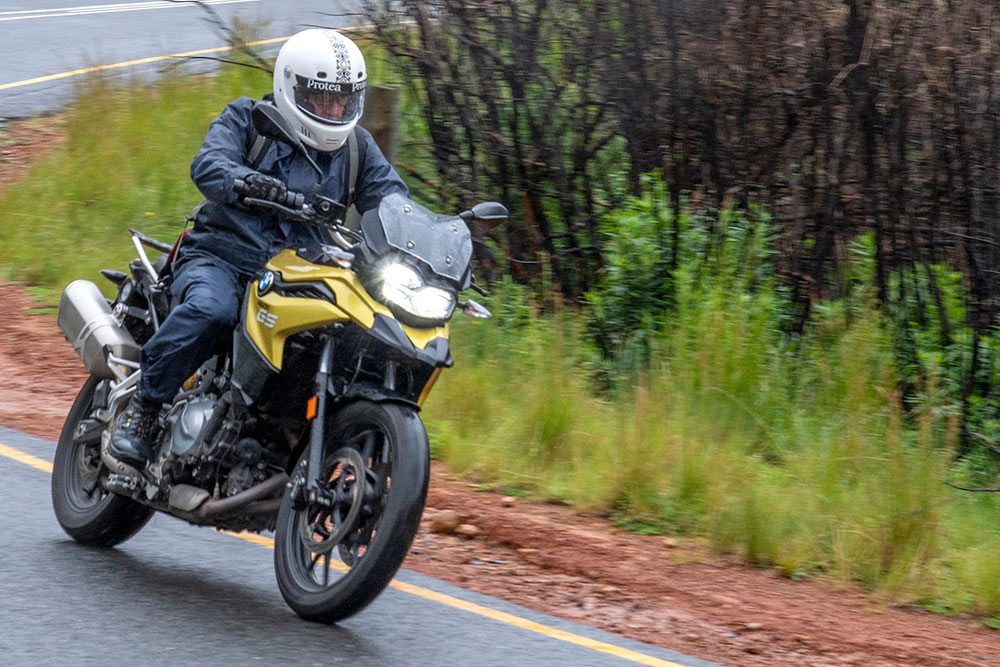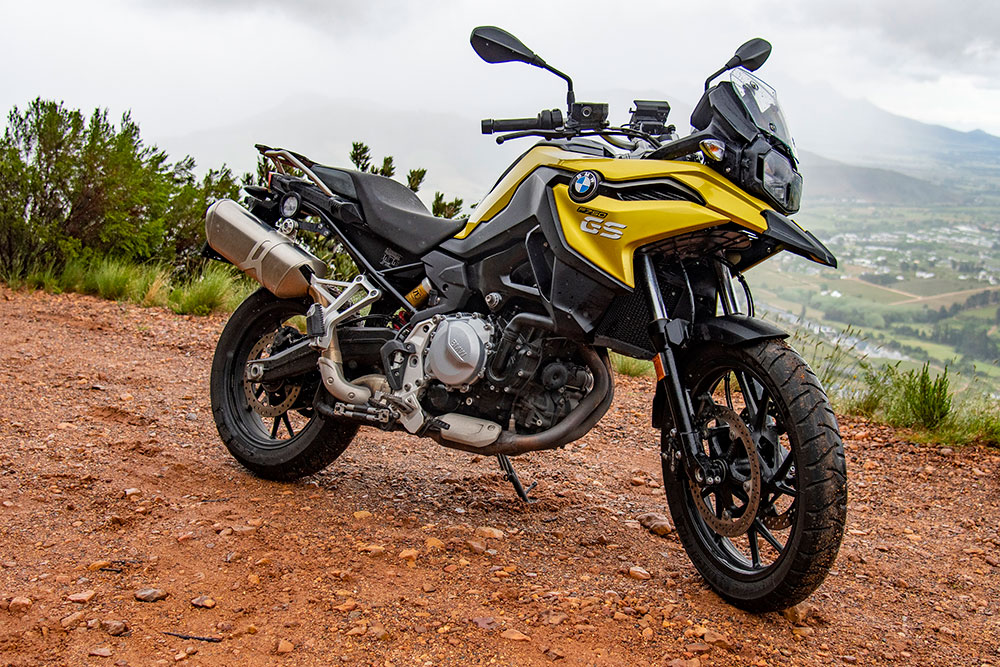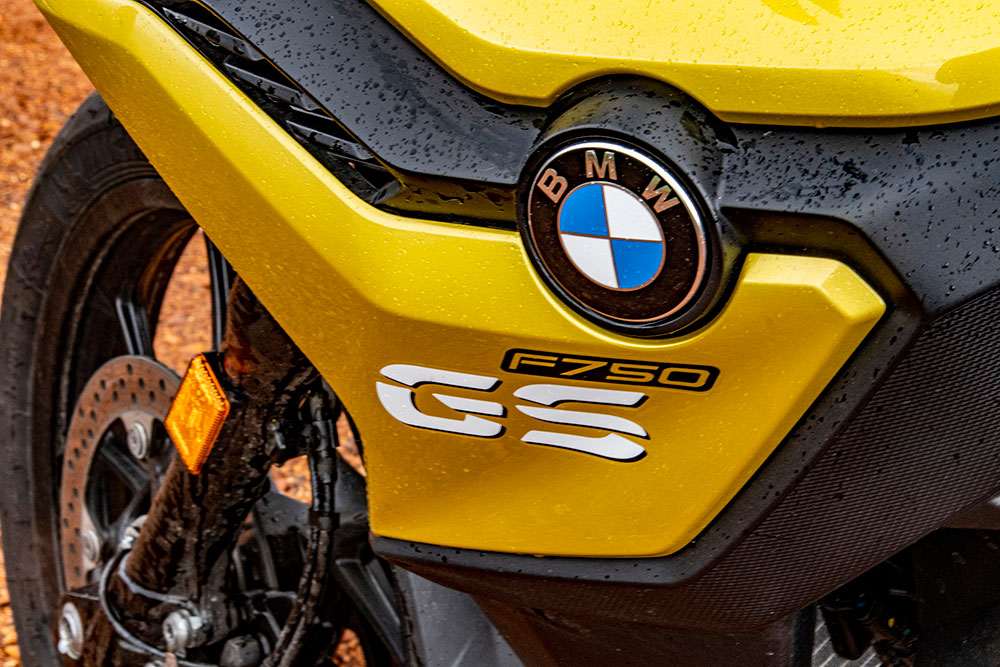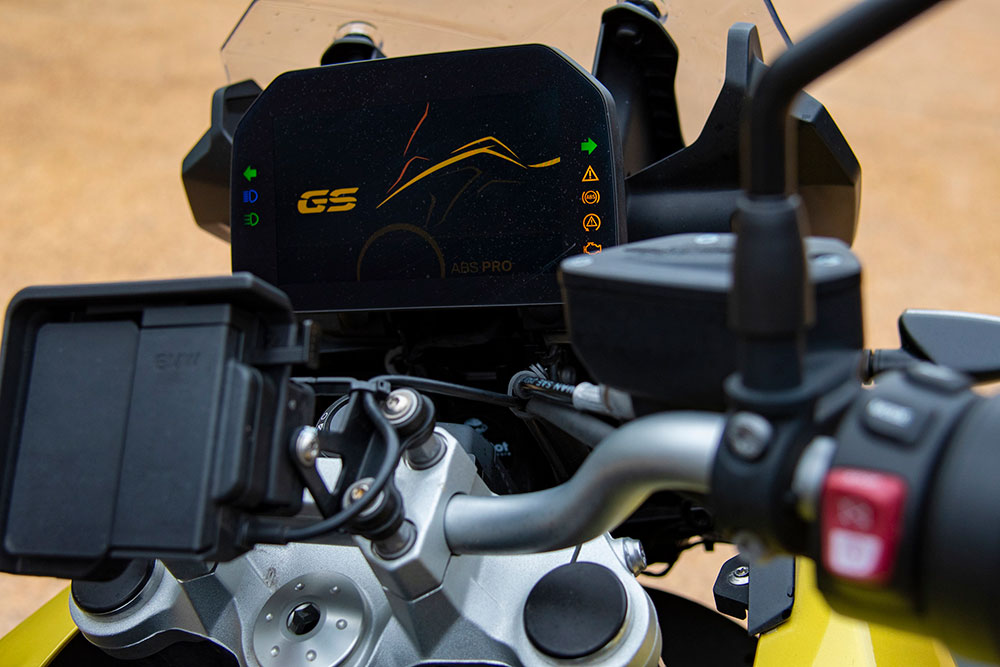
19 Dec On yer bike: BMW F 750 GS
For once, FMM Curator Wayne Harley has mixed feelings about a Beemer…
I was recently able to test the 2019 BMW F 750 GS and for the first time I was left in two minds about whether I liked a motorcycle or not. Back in the July newsletter, I wrote on the BMW R 1250 GS and in the review I looked back at the great enduro history behind the GS tag, and the amazing on- and off-road aspects of a true GS. With the latest F 750 GS, in my opinion BMW has watered down the enduro aspect and added little to the street dynamics, so I ask myself what do we have here, a soft GS, dual -port 750 or GS commuter? This conundrum bugged me the entire week I had the bike.
As a commuter, this bike works rather well. It’s comfortable, stable and totally predictable in traffic, and being set on a GS platform gives that little extra saddle height that does help in seeing up the road. The seat is very comfortable and totally adjustable. However, the (standard) tiny screen is of little use and I found the width of all the plastic around the fuel tank distracting, making the bike feel bigger than it actually is, so slipping through a gap or moving between traffic takes a little getting used to. A detuned 853 cm3 parallel-twin engine out of the BMW F 850 GS Adventure provides 57 kW, which is more than enough power to get around with ease, and is fairly economical, giving around 4,1 litres/100 km. But at the current price starting at R179 400, I asked myself would I pay that much for a commuting motorcycle. So, just how good is it in its other role?
As a true adventure bike you wouldn’t want to use the F 750 GS. I would strongly suggest you rather spend some extra cash and opt for the F 850 GS, which is a very capable and true adventure machine. I did not enjoy taking the F 750 GS off-road. The wheels and tyres supplied as standard are for paved roads, so I didn’t have too much faith in the front end with its 19-inch front wheel (the F 850 GS’s is 21-inch) when traveling down dirt roads with loose surfaces or big corrugations. Around some bends I could feel the front end washing out. However, the suspension is really good so I can only slate the tyres. It’s the same story when going up steep inclines at slow speeds and needing to get the power down, which resulted in a spinning and slipping rear end with very little grip. The traction control would be a great help with the correct tyres.
Some people reckon the detuned engine is better than the standard spec used in the F 850 GS as it is more useable and predictable. Here, I disagree again. Ridden by a stocky South African with two weeks of touring adventure gear on board and the extra power will be missed. And then those alloy rims are also something I don’t have too much faith in; if they are the way to go then they would be installed on all GS models. The F 850 GS is still on the tougher cross-spoke wheels. So, to repeat, this motorcycle is intended more for road use. It is lower than a standard F 850 GS Adventure, holds less fuel and cannot carry as much extra weight.
Given the foregoing, you can only think it would be a great dual-sport machine, offering a little something of everything, but somehow it just feels like it’s not quite there – it’s as if BMW knew this bike would spend most of its life on tar, which is why it opted for a detuned engine. Why not at least add a Dynamic Pro option in the road mode, or lighten it up slightly – its only 20 kg lighter than the F 850 Adventure of which 7 kg is fuel, and never mind such extras as spoke wheels and fairings. The BMW F 750 GS tops out at 190 km/h and F 850 GS at 198 –and that’s the enduro version.
At the end of my time with this BMW F 750GS I can’t say why I would want one. It is really well-made and a very capable motorcycle and does a little of everything safely and reliably, but one of the few motorcycles I’ve ridden that has not put a smile on my face.






